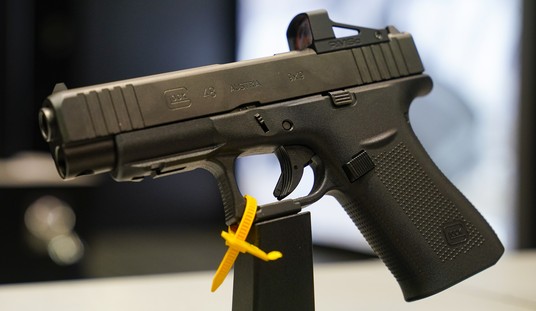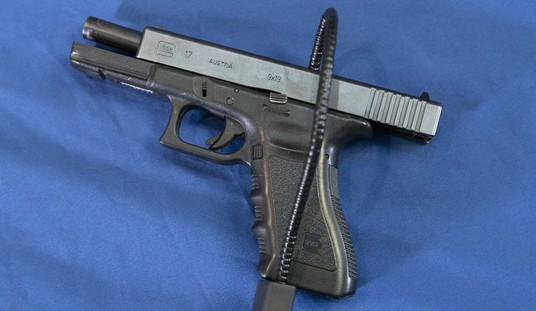Back in 2017, the Fourth Circuit Court of Appeals ruled that, despite what you might think, modern sporting rifles aren’t protected by the Second Amendment because they’re “like” machine guns; battlefield weapons of war that, according to the appellate court, lie beyond the scope of the right of the people to keep and bear arms.
The Supreme Court declined at the time to hear the case, but in late 2020 the Second Amendment Foundation, Citizens Committee for the Right to Keep and Bear Arms (where, in full disclosure, I serve as an unpaid member of the Board of Directors), and the Firearms Policy Coalition sought to overturn that Fourth Circuit decision. This case has now made its way to the Supreme Court, and this week a coalition of twenty-five Attorneys General filed a brief of their own with the Court urging them to grant cert and overturn Maryland’s ban rather than letting the Fourth Circuit’s decision remain on the books.
SAF founder and Executive Vice President Alan Gottlieb said in a statement that the organization is “truly gratified that the top law enforcement officers in fully half of the states in our country have signed onto this amicus brief. The fact that all of these top legal officers support our challenge to Maryland’s egregious law should carry considerable weight, and underscore the validity of our case.”
Led by West Virginia AG Patrick Morrissey and Arizona AG Mark Brnovich, the AGs of Alabama, Alaska, Arkansas, Florida, Georgia, Idaho, Indiana, Kansas, Louisiana, Mississippi, Missouri, Montana, Nebraska, New Hampshire, Ohio, Oklahoma, South Carolina, South Dakota, Texas, Utah, Virginia, and Wyoming declare in their amicus brief that if the Fourth Circuit’s ruling opinion stands, it “will exacerbate trends in Second Amendment jurisprudence that both directly and indirectly imperil Amici States’ laws and policy preferences,” which is lawyer-speak for “if you don’t overturn that decision the lower courts are going to re-interpret the Second Amendment into nothingness.”
As the AG’s point out, in order to declare Maryland’s ban on modern sporting rifles constitutionally sound, the Fourth Circuit had to contradict what the Supreme Court said in 2008’s Heller decision striking down Washington, D.C.’s ban on handguns and storage requirements that mandated guns be stored in a way that made them useless for self-defense in the home.
Although Heller held that the right to keep and bear arms extends to firearms that are “in common use” for “lawful purposes,” the Fourth Circuit held that “weapons most useful in military service” are “outside the ambit of the Second Amendment” without regard to whether these same weapons are also in common use for lawful purposes.
… Instead of asking whether law-abiding citizens commonly use the item banned for lawful purposes, the Fourth Circuit has crafted a unique and unsupported standard. It fashioned its new rule by mis-reading a single conditional statement made in dicta in Heller in response to a separate hypothetical argument. 554 U.S. at 627.
The Court did not hold outright that states may ban the fully-automatic M-16—and it certainly did not suggest that states could ban its semi-automatic civilian cousin, the AR15. Rather, Heller addressed an argument about the connection of the Second Amendment right to the prefatory clause “if weapons that are most useful in military service … may be banned.” Id. at 627. The Fourth Circuit’s standard thus redirects focus from “the central component” of the right secured by the Second Amendment—an individual’s right to selfdefense—and bypasses the Court’s common lawful use standard.
The AG’s go on to argue that, based on the Fourth Circuit’s line of reasoning, popular models of handguns like the 1911 could also fall outside the scope of the Second Amendment, given that it was in use by the military for almost 75 years. Its popularity among civilians is of no concern, according to the Fourth Circuit’s analysis used to uphold Maryland’s ban on modern sporting rifles, so even though the 1911 is used by law-abiding gun owners for a variety of lawful purposes, its long association with the military would be enough to place it off-limits to we the people.
Upholding Maryland’s rifle ban would endorse a topsy-turvy application of Heller in the same way: it would outlaw another class of popular weapons in common use for self-defense and other lawful purposes.
The AGs also argue that, contrary to the claims of the anti-gun politicians that approved the ban as part of the Maryland Firearms Safety Act of 2013, making modern sporting rifles illegal actually makes Maryland gun owners less safe.
For instance, firearms subject to Maryland’s ban can provide extra benefit to crime victims: “The AR-15, in particular, is an easy firearm to shoot accurately and is generally easier to fire accurately than a handgun. The AR-15 rifle is light in weight, and has good ergonomics, and is suitable for people of all statures and varying levels of strength.”
Additionally, Maryland bans semiautomatic rifles with two or more of a list of features including “a folding stock” and “a flash suppressor,” but these items increase accuracy and convenience, not lethality or dangerousness, of the weapon.
A folding stock “serve[s] legitimate, non-military purposes,” and its “one principal function” is “to make the rifle easier to transport, stow, or secure.” Dennis P. Chapman, Features and Lawful Common Uses of Semi-Automatic Rifles, 80, 82 (July 16, 2019) (“Chapman”).6
This function allows individuals to store their firearms safely while still keeping them easily accessible for self-defense—even with limited space to do so, such as an owner possessing a smaller gun safe or living in tight quarters. The folding stock does not make a gun deadlier. The military’s default firing position “is from the shoulder,” a position that requires a stock that is not folded away. Id. at 82-83.
Thus, “[t]he ability to reduce the size of the rifle by folding or otherwise collapsing the stock is a simple matter of convenience, not of lethality or tactical surprise, and this convenience is of equal utility in civil as well as military life.” Id. Folding stocks thus make defensive ownership more convenient but do not “make [rifles] substantially more dangerous as instruments of crime than their fixed stock analogues.”
As for flash suppressors, the AGs correctly point out that they may aid in accuracy and situational awareness for those forced to use their firearm in self-defense in a low-light setting, but there’s no evidence that the technology makes modern sporting rifles more dangerous or deadly.
The state of Maryland has until early February to reply to the cert petition, and I’m sure that Maryland AG Brian Frosh is calling his Democratic colleagues and coordinating a blue-state response in defense of the state’s “assault weapons” ban. As for when the Supreme Court might make a decision on whether or not to grant cert, no one really knows. The Court may very well decide to hold off on doing anything with Bianchi v. Frosh (and several other pending challenges to gun control laws around the country) until it’s issued its opinion in the pending case dealing with New York’s carry laws (which will most likely come down in June), but there’s nothing formally preventing SCOTUS from either accepting or rejecting the cert petition before then.
The fact that fully half of the country’s Attorneys General (including the newly-sworn in AG in Virginia, Jason Miyares) is asking the Court to take the case will hopefully have an impact on the justices, because Kolbe really is so egregiously awful that it needs to be revisited and overturned. I’d actually put that Fourth Circuit opinion up there with the Ninth Circuit’s decision in Young v. Hawaii that in essence stated the Second Amendment doesn’t protect the right to bear arms as the worst post-Heller rulings we’ve seen, and I’m hopeful that SCOTUS will have much more to say about both of these cases in the months ahead.









Join the conversation as a VIP Member